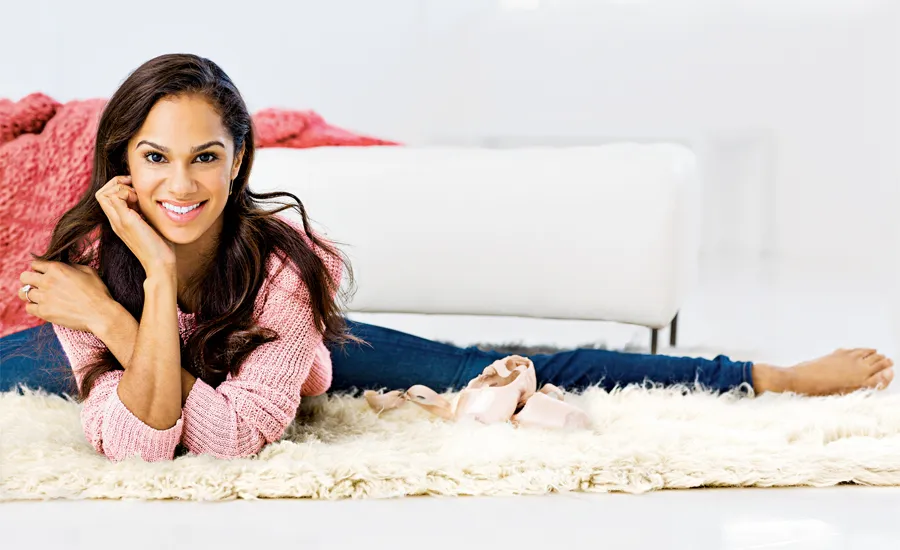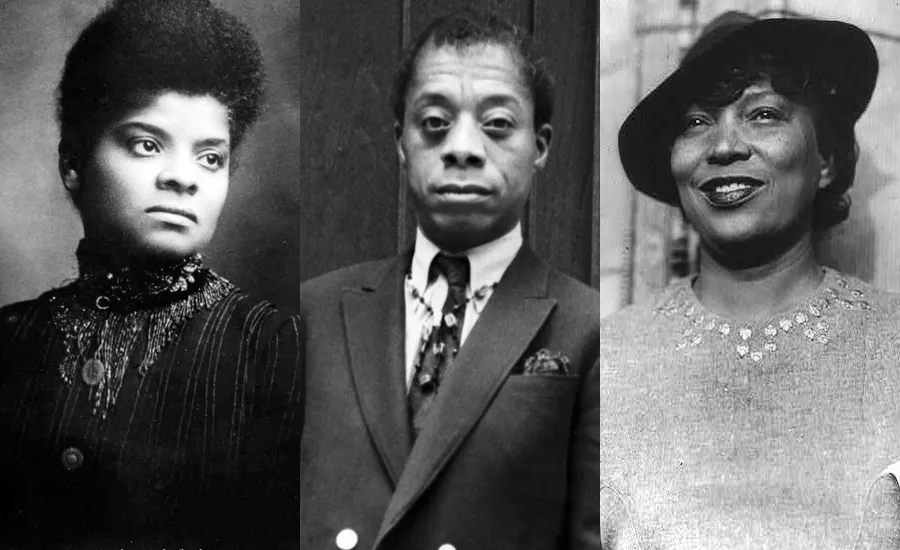“Thank you for your application to our ballet academy. Unfortunately, you have not been accepted. You lack the right feet, turnout and torso length. You have the wrong body for ballet. And at your age, you are too old to be considered.”
I sat in my dance teacher Cindy’s living room, staring at the letter from one of the top ballet companies in the country, too shocked to move. The company not only didn’t want me, it thought I was totally wrong for ballet? Finally I handed Cindy the letter and asked, “Why would they say that about me?”
I’d gotten a late start in ballet. Some dancers begin their training as young as age three. I took my first lesson when I was 13. Not at an elite dance school either, but at a Boys & Girls Club, something unheard of in professional ballet.
READ MORE: MISTY COPELAND HONORED WITH A BARBIE DOLL IN HER IMAGE
I’d made real progress, though. By the time I auditioned for that prestigious company, I was 15. I’d been called a ballet prodigy, a word whose depth of meaning I didn’t initially understand.
Early on, Cindy had read me the famed choreographer George Balanchine’s description of the ideal ballerina. “A small head, sloping shoulders, long legs, big feet and a narrow rib cage,” she said. “Misty, you’re perfect. God made you for ballet.” And I believed her.
Maybe it was a reaction to the uncertainty of my childhood, but I longed for a place where I felt safe and valued, where I belonged. At last I found it in ballet. Or so I thought. I grew up in San Pedro, California, one of six children. Things were not easy for our family. We moved around a lot—in large part prompted by my mom’s relationships with the men in her life.
At one point, Mommy and the six of us lived crammed into one motel room, eating Cup O’ Noodles for dinner. I was a shy child, and the stress of moving and changing schools gave me terrible headaches.
In middle school I discovered the joy of movement and performance. Following in the footsteps of my big sister Erica, who’d been a star on the drill team, I auditioned with a routine I choreographed myself. I made the team, shocking my family by being named captain.
The drill-team coach suggested I take a ballet class at the Boys & Girls Club, where her friend Cindy was the instructor. The class was held on the basketball court. At first, I didn’t have the nerve to join in. I didn’t have a leotard or ballet shoes like everyone else. So I watched from the bleachers.
READ MORE: DIVINELY INSPIRED TO CONTINUE DANCING
Cindy finally coaxed me onto the floor in my baggy gym clothes and socks. “This isn’t about how you’re dressed,” she said. “It’s about how you move.” Compared to the other girls, it seemed like I was doing everything wrong. I was mortified. Still, I kept going, and Cindy kept encouraging me. She had me take classes at her ballet school (she waived the fees).
“The way you can pick up movements after seeing them just once or twice,” she said, “do you know what a gift that is?” She was taken by the way I could do steps that took most students years to learn. I fell in love with ballet. Dancing, I was no longer the shy new girl. I felt strong and sure of myself.
Just three months after I started ballet, I stood en pointe for the first time, one arm rounded and raised above my head, the other resting on the barre for balance. “You’re going to be a star!” Cindy said, snapping a photo so I would always have a memento of that moment.
A star like American Ballet Theatre’s Paloma Herrera? Cindy had shown me a video of her dancing, and I was spellbound. Could I become a principal dancer with ABT and wow audiences like Paloma?
That dream took hold of me. I was determined to learn as much ballet as I could as fast as I could. My mom let me leave our crowded motel room and live with Cindy and her family so I could train intensively. At 15, I won an arts scholarship from Los Angeles’s Music Center. I was on my way.
Along with a newfound confidence, ballet gave me the stability I longed for. In class and onstage, all my stresses fell away and I felt at home. I auditioned for a spot in the summer programs of the top ballet companies in the country. I was so sure ballet was my destiny that the rejection letter came as a complete shock. “I’m wrong for ballet?” I asked Cindy, hardly able to get the words out.
Cindy took my hands. “It has nothing to do with your talent, Misty,” she said. “There are very few African-American dancers at major ballet companies, and they don’t know what to make of you. But I know God made you to dance. And deep down, you know that too.”
I took her words to heart. That summer I studied at the San Francisco Ballet, and the next at ABT. When I graduated from high school, I moved to New York City and joined ABT’s studio company as an apprentice. At age 18, I was promoted to the corps de ballet. Step by step, I was getting closer to my dream.
Then I developed a vertebral fracture and couldn’t dance for a year. Without the routine of classes, rehearsals and performances, I felt lost. Things got worse when I finally hit puberty and my body changed. Suddenly I had a large chest and a thicker body. Even after I was able to dance again, I could no longer eat anything I wanted without worrying about the consequences.
Ballerinas are judged on the way they look. Especially in the corps, which in classical ballet is supposed to have a uniform look. Being different can be considered distracting to the audience and to the overall artistic vision, something casting directors keep in mind when selecting ballerinas for roles that can make a dancer’s career.
One day a staffer at ABT called me into his office. “You need to lengthen,” he said. Lengthen is ballet lingo for losing weight. “Just a little, so you don’t lose your classical line.” Even though I was five foot two and barely over 100 pounds, I didn’t have a classical line anymore, I had curves.
It was like an echo of that rejection letter. You have the wrong body for ballet. Now I felt as if my dream company was rejecting me too. I left the staffer’s office in tears.
Ballet wasn’t my safe space anymore. I felt like an outsider in the one place I’d been most at home. To me, the message was, You’re not white, so you’re never going to be right for ballet. Since the company was founded, in 1940, ABT had never had an African-American female principal dancer. I wasn’t going to change history. What was the point of even trying?
So I rebelled. In class, where we practiced in front of mirrors to perfect our technique, I wore big T-shirts so no one, including me, could see my body. I’d go home feeling bad about myself, overeat, then get even more upset because I’d lost control and looked worse than before.
Soon I stopped going to class, which would practically ensure that I never became a principal dancer. My career was slipping away. I was far from my family, from Cindy. Being the only African-American woman in the company made my isolation worse. I might have stayed stuck in the unhealthy cycle of emotional eating and self-doubt if a few special people hadn’t come into my life.
One was my first boyfriend, now my fiancé, Olu. He helped me develop a new relationship with food. Growing up, I just ate whatever my family could afford. I started choosing foods that would strengthen my body and give me the energy I needed to get my dream back on track. “A ballerina is an artist and an athlete, and you need to have your body in top form,” Olu would say.
Another big influence was Susan Fales-Hill, an author and TV producer whom ABT’s artistic director asked to mentor me. “There are so many African-American women rooting for you,” Susan told me one day. “Think about the ones before you, who broke down barriers for you. You may be alone at ABT, but you are not alone in the world.”
Susan helped me regain my focus and made me see the bigger world around me. Ballet wasn’t just for my own joy. It was a way to inspire people, to show other little brown girls growing up in poverty that they could reach for their dreams.
One morning I was practicing in front of full-length mirrors and for the first time in a long time, I wasn’t worried that I was fat. I was amazed by how my arms, my legs, my feet moved so beautifully and confidently. My skin color and body type aren’t going to change, I thought. I just have to love myself and be the best dancer I can be.
Once I grew comfortable with who I was and what I looked like, opportunities I never could have imagined opened up in my career at ABT and beyond. Shortly before I turned 25, ABT promoted me to soloist. The next few years I performed a variety of roles, both classical and contemporary. I even danced in a music video with Prince and performed with him on tour.
In 2012 I danced my first lead role in an ABT production, in a new staging of Firebird, one of three dancers chosen to perform the role. Alexei Ratmansky, the choreographer, encouraged us to adjust movements based on what was most natural for our bodies. It was an extraordinary experience, one I’ll always cherish.
I saw more people of color in the audience at the Metropolitan Opera House for my debut as Firebird than I’d ever seen before. That night was about much more than me. It was about welcoming a new audience to this beautiful art form.
When the opportunity came in 2014 to be one of the faces of Under Armour’s “I Will What I Want” campaign and shoot a commercial, I was excited. Finally, people will get to see ballet dancers as the athletes we are, I thought.
The commercial had more than nine million views. I hope that, as a result, little girls everywhere, no matter what they look like, were introduced to ballet and can either see a future for themselves or become fans.
I made history in June 2015, as the first female African-American principal dancer at American Ballet Theatre. So much has happened in the last four years. I’ve been up and I’ve been down. But I’ve learned a lot. My hope is that the progress I’m making in my career will open a path of possibilities for generations of brown ballerinas to come.
Today my body is pretty far from that of Balanchine’s ideal. I have a large chest, curves, and muscular arms and legs. Yet I still believe Cindy was right. God made me to dance and to show people that there is no one standard for what a ballerina should look like.
For more inspiring stories, subscribe to Guideposts magazine.





